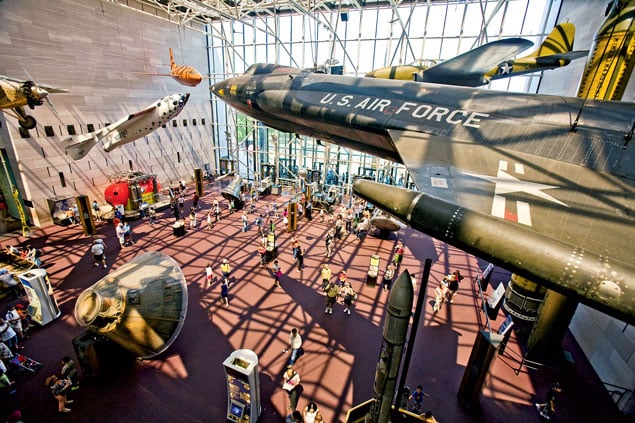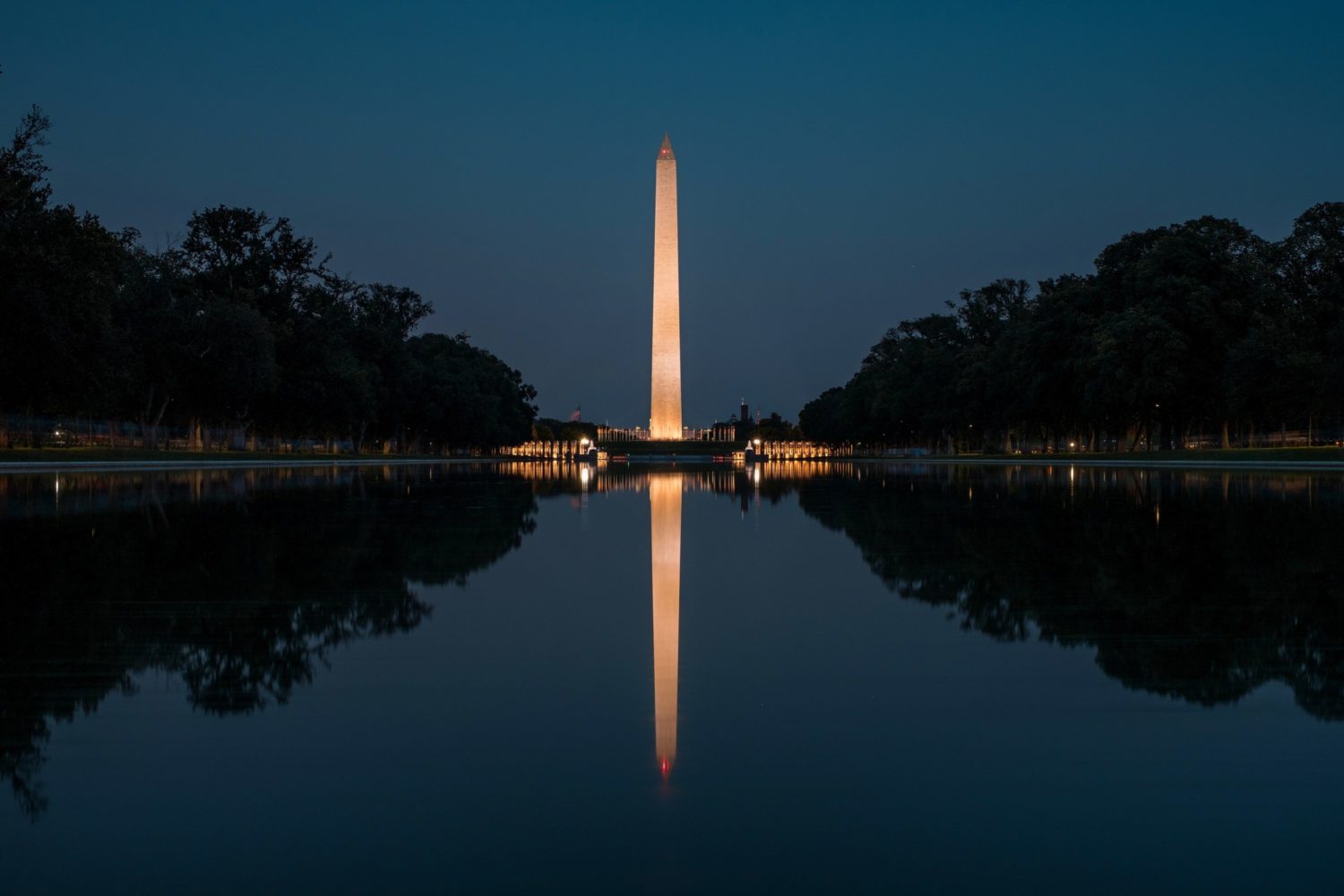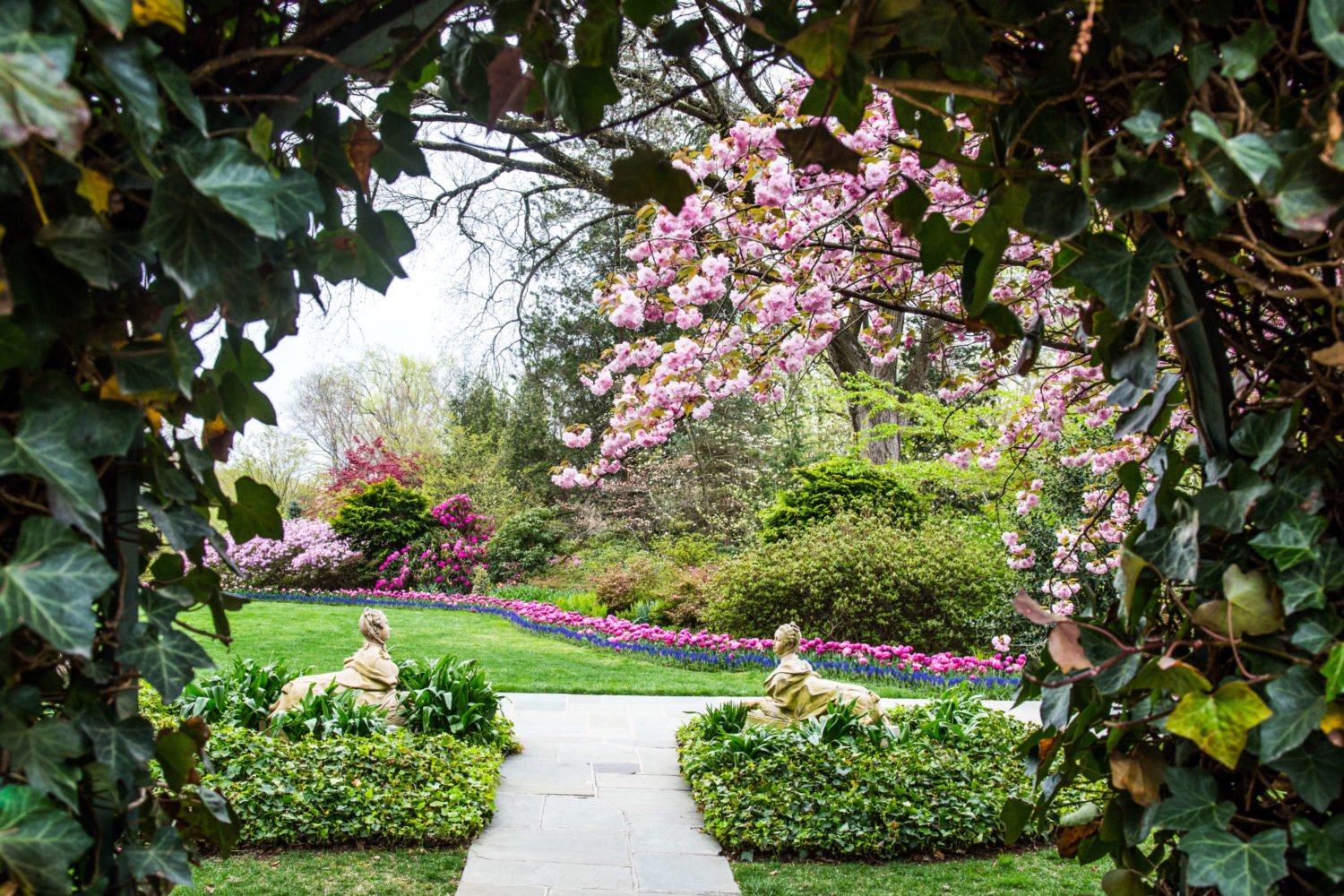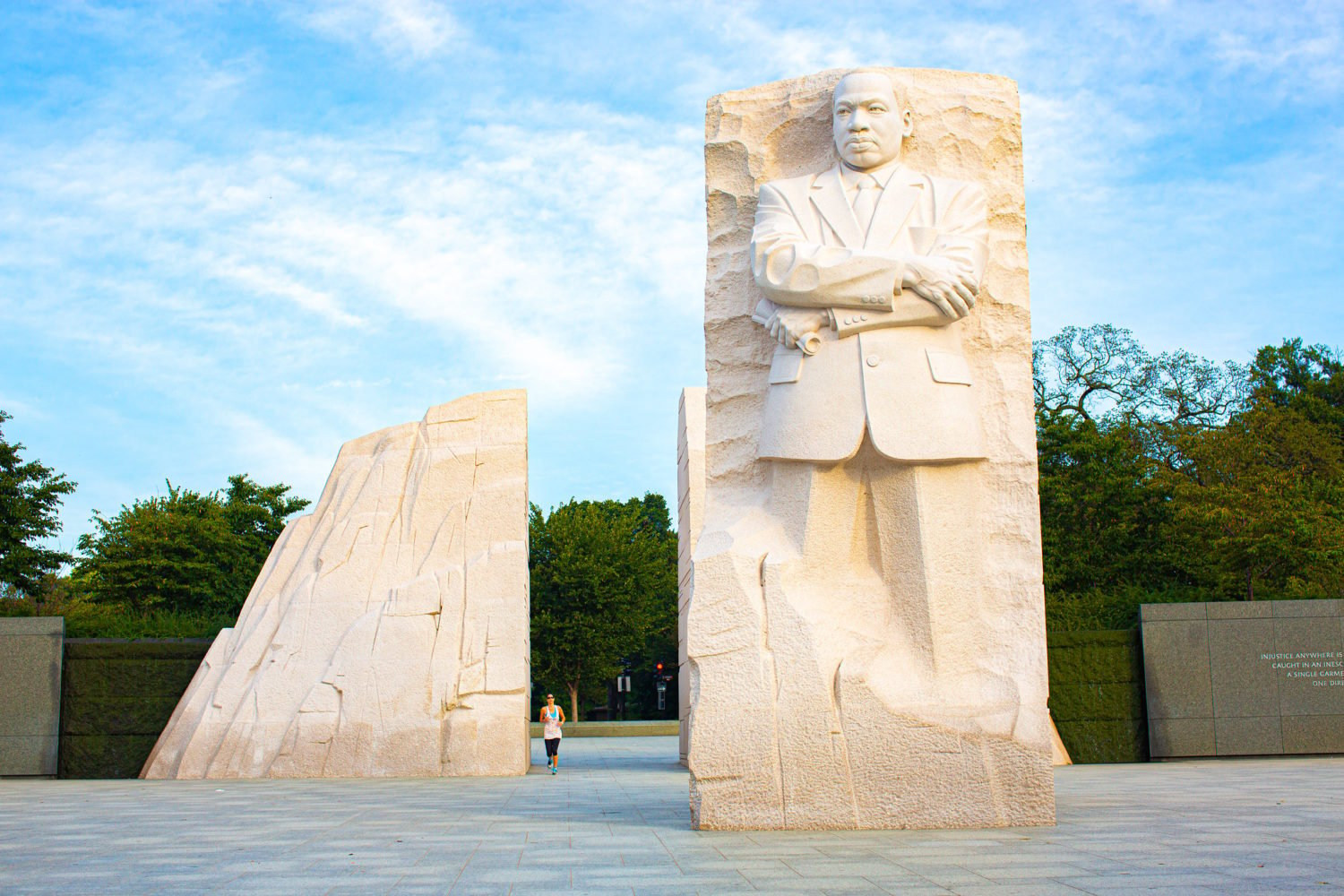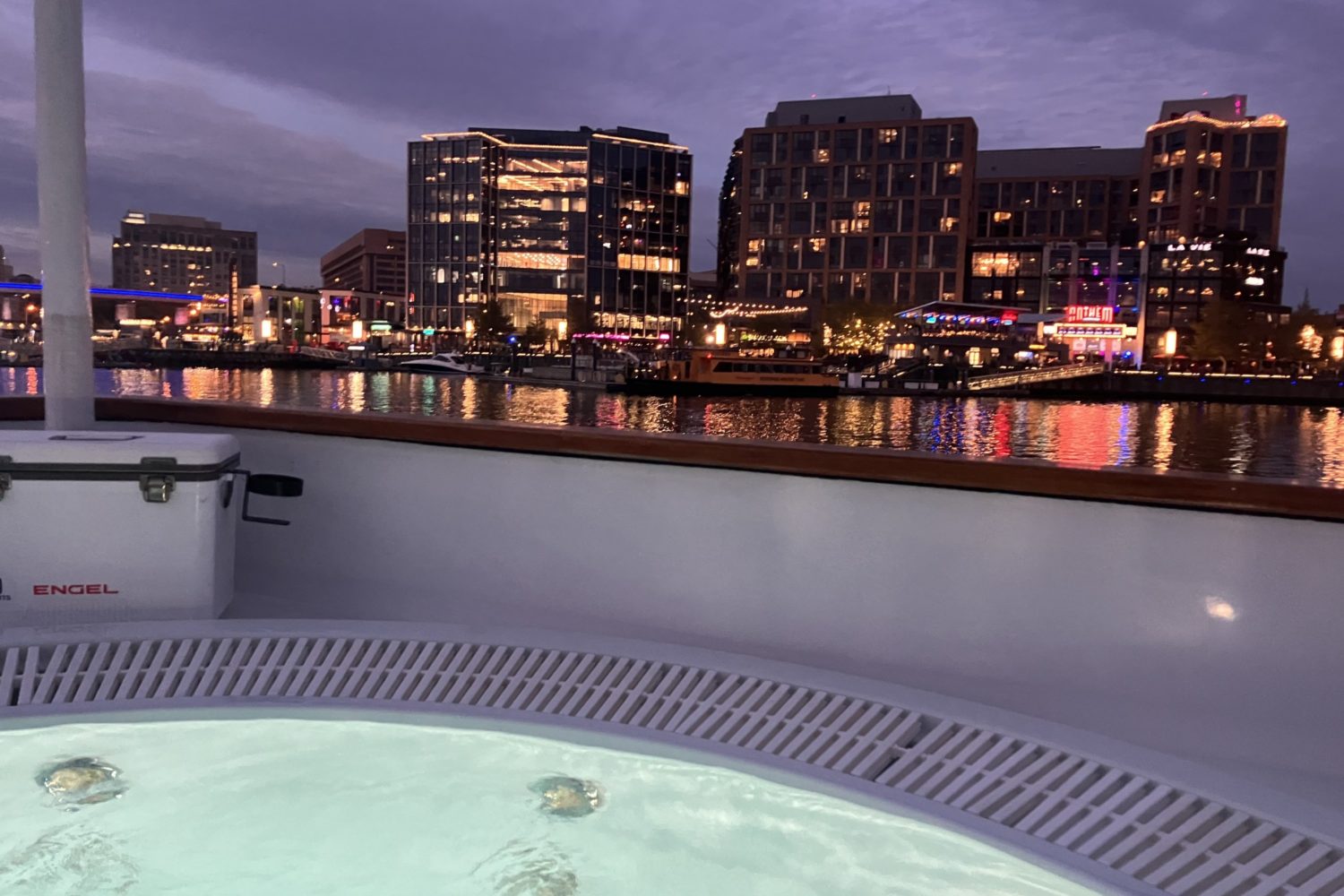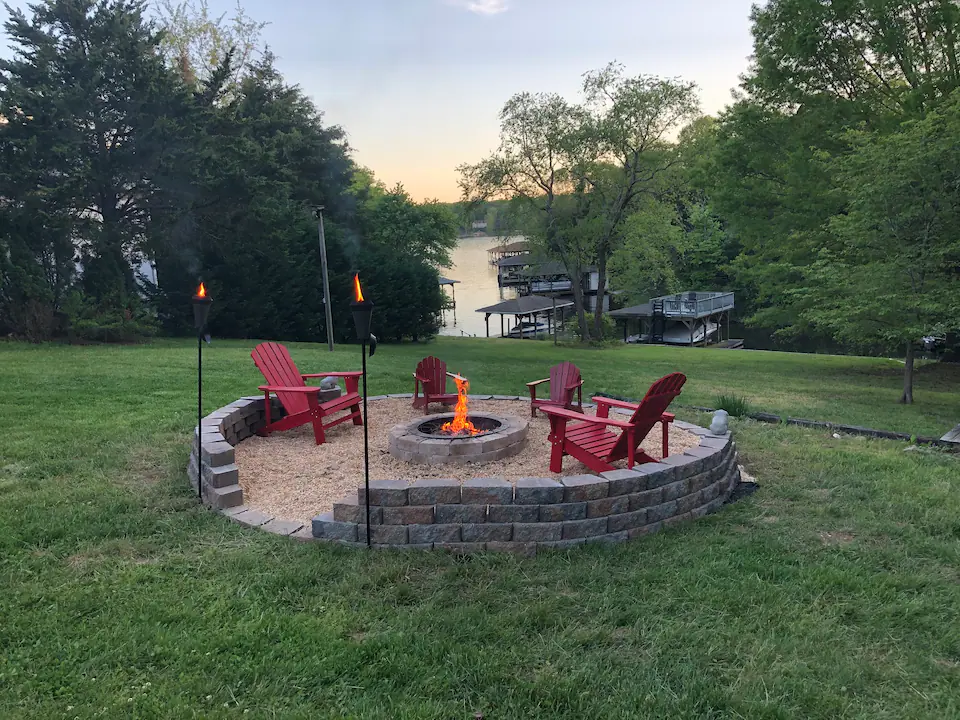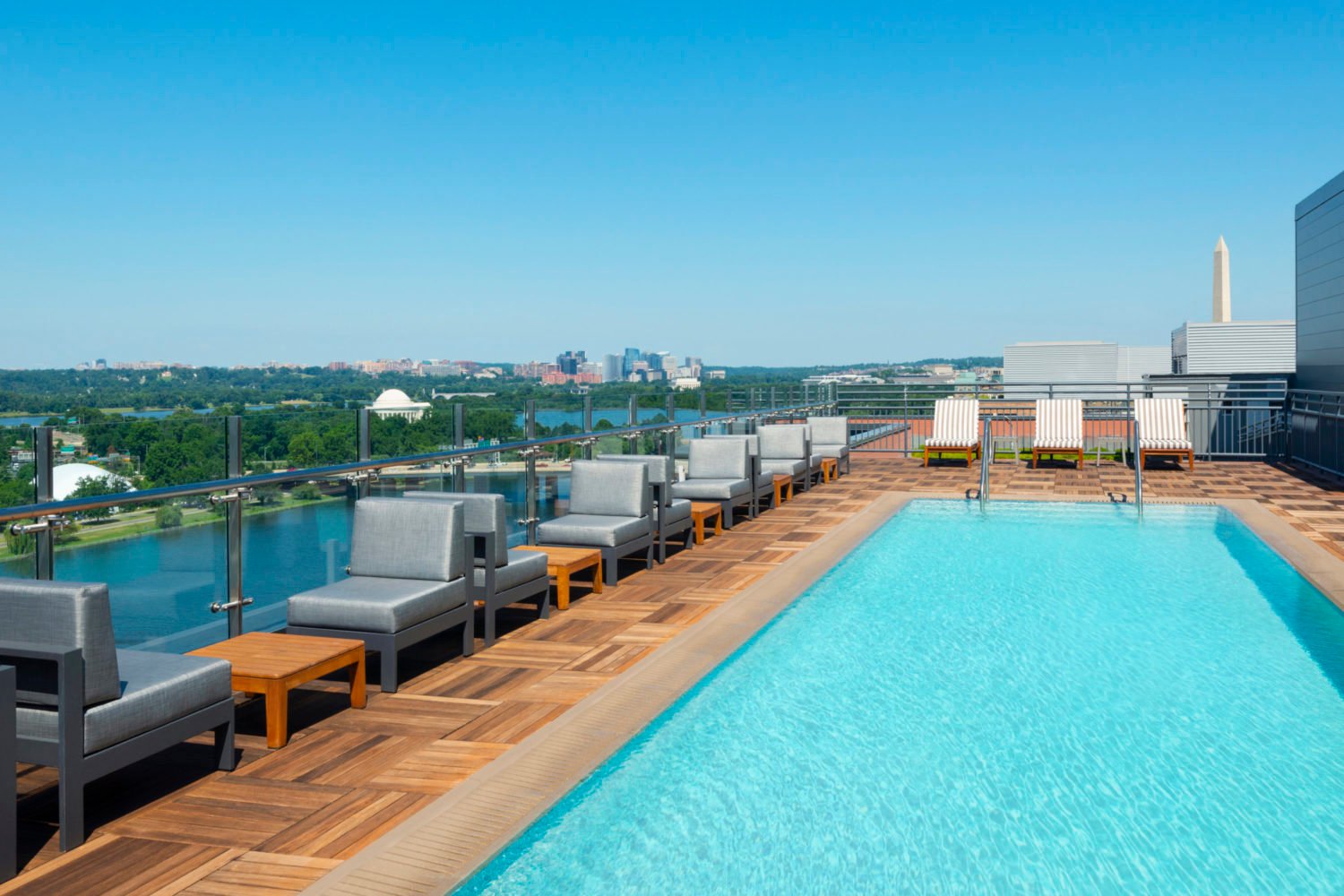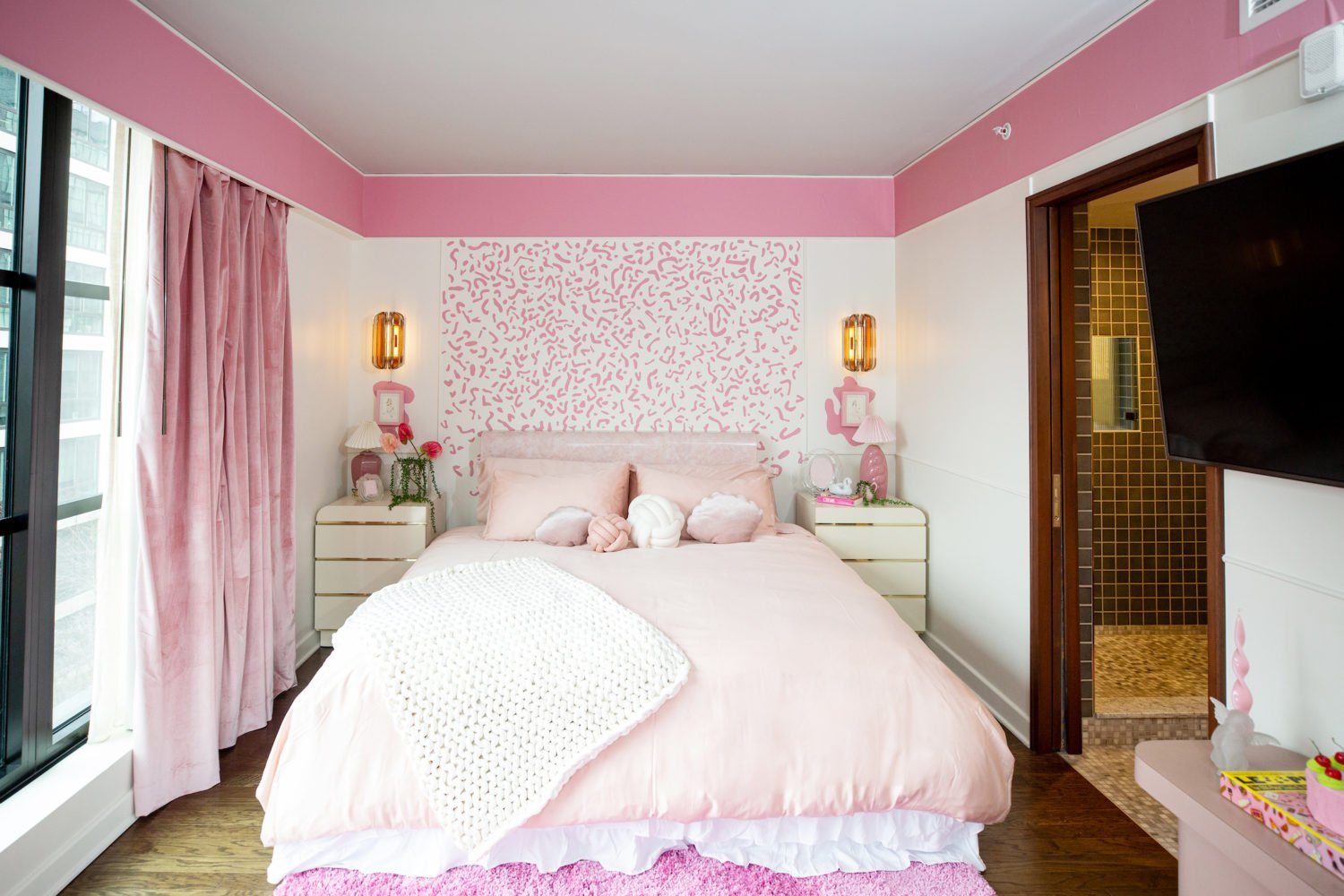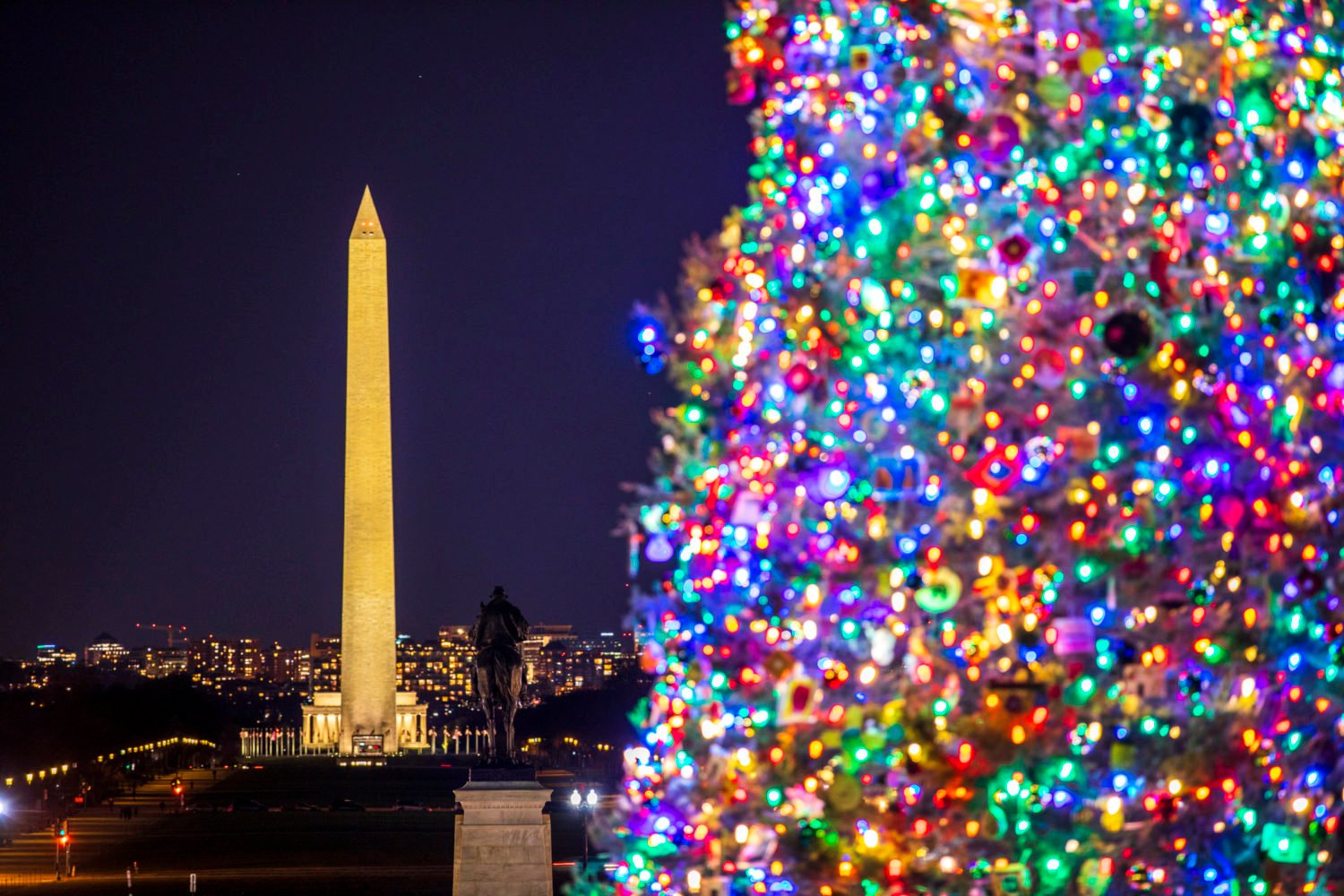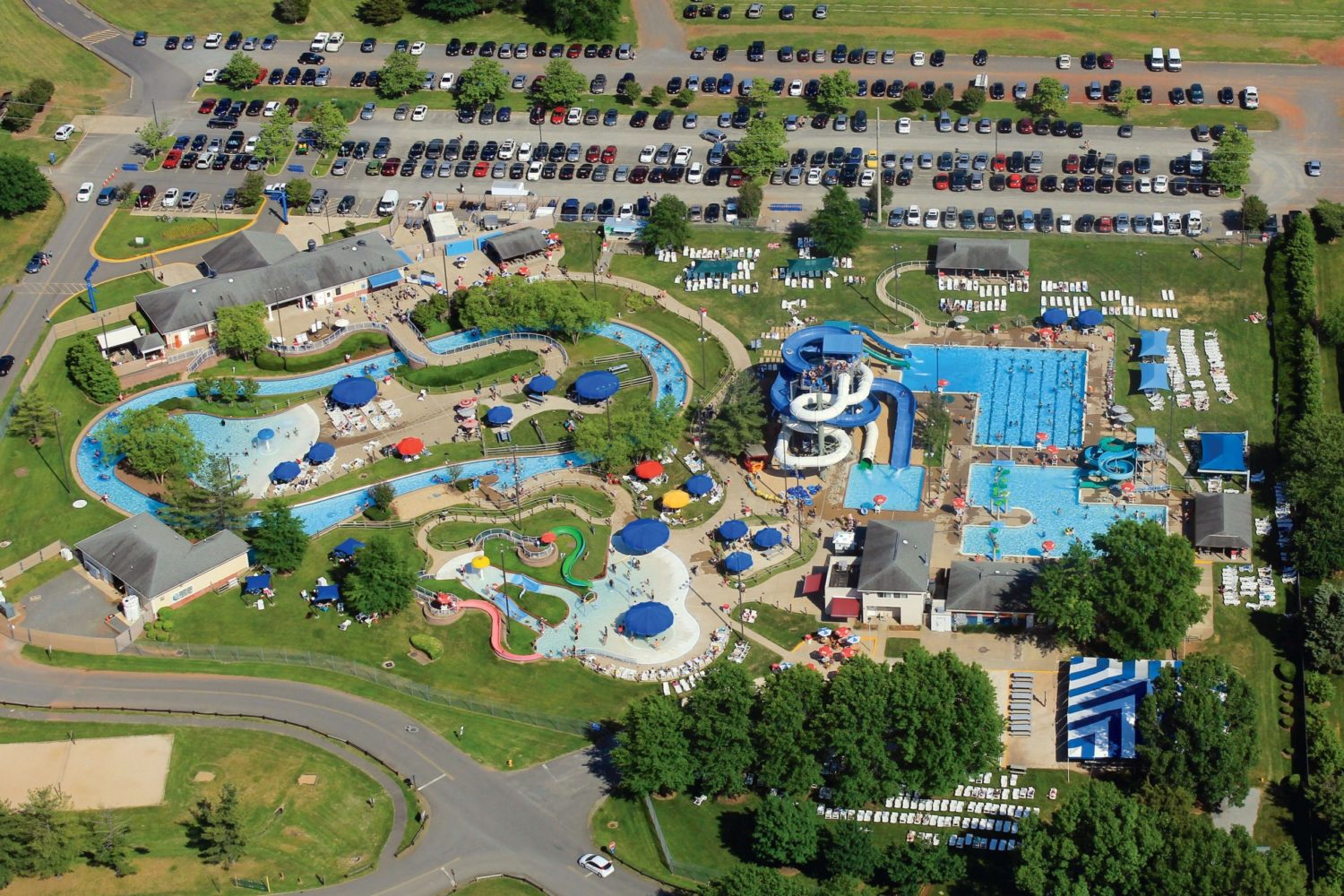National Air and Space Museum
In 2011, the Air and Space Museum had more than 7 million visitors, making it the most popular museum in the country. It isn’t hard to assess its appeal—the place is home to the world’s largest collection of air and spacecraft, as well as interactive flight simulators, a planetarium, Imax movies, and more. Initially signed into law by President Truman as the National Air Museum in 1946, the museum was renamed the Air and Space Museum in 1966 by President Johnson.
The museum moved to its current home in a sleek marble-and-glass building on the National Mall in 1976, and promptly welcomed 5 million visitors in just six months. Just past the Mall entrance is the Milestones of Flight entry hall, which gives a nice visual history of aviation by displaying Charles Lindbergh’s Spirit of St. Louis, the Bell X-1 in which Chuck Yeager broke the sound barrier, and the North American X-15—the first aircraft to break Mach 4, 5, and 6—as well as the Apollo 11 command module Columbia. Don’t miss the Golden Age of Flight gallery, which includes Howard Hughes’s H-1 racer, or the Barron Hilton Pioneers of Flight wing on the second floor, which celebrates people who achieved significant “firsts” in flight.
Sixth ST. and Independence Ave., SW; 202-633-1000; nasm.si.edu. Metro Station: L’Enfant Plaza/Smithsonian. Free.
National Air and Space Museum Steven F. Udvar-Hazy Center
Located near Dulles Airport, the Air and Space Museum’s annex includes some of the larger items from the collection spread out over 340,000 square feet. Open since 2003, the center includes the Enola Gay, the Boeing airplane that dropped the first atomic bomb on Hiroshima, an Air France Concorde, and a Gemini VII space capsule.
The Udvar-Hazy Center also has flight simulators and an Imax theater, as well as an observation tower from which visitors can watch planes land at Dulles.
Steven F. Udvar-Hazy Center, 14390 Air and Space Pkwy., Chantilly; 202-633-1000; nasm.si.edu/udvarhazy. Not Metro accessible. Free.
National Museum of Natural History
Rivaling the Air and Space Museum in terms of popularity, the Natural History Museum is one of the oldest on the Mall, having sat in its current domed Beaux-Arts building since 1910. The museum owns more than 126 million items in upward of 1.5 million square feet of exhibits. It was originally founded in 1846, at the same time as the Smithsonian Institution; construction on the new building was halted in 1905 because Smithsonian leaders objected to the French-influenced design of the museum’s entrance, which was subsequently simplified.
The Constitution Avenue entrance leads to a lobby where an Easter Island statue stands guard; exhibitions include a 1.6-million-year-old Kenyan hand-ax and Northwest Coast totem poles. On the first floor, a 13-foot Fénykövi elephant from Angola sits under the central dome in the rotunda, while the adjacent Sant Ocean Hall is dominated by the model of a North Atlantic right whale. Upstairs on the second floor, the 45.52-carat Hope Diamond is the centerpiece of the Gems and Minerals gallery, and the Butterfly Pavilion allows visitors to walk through an indoor garden surrounded by hundreds of live butterflies and moths (tickets are $6). The nearby Insect Zoo features creepy crawlies, including live tarantulas, cockroaches, and bees. An Imax theater on the first floor shows nature movies on six-story-high screens.
Tenth St. and Constitution Ave., NW; 202-633-1000; mnh.si.edu. Metro Station: Federal Triangle/Smithsonian. Free.

National Zoo
Set on 163 acres in Northwest Washington, the National Zoo was founded in 1889 to inspire the “advancement of science, the instruction and recreation of the people.” Since the 1960s, the zoo has worked toward conserving and breeding endangered species; its 3,200-acre complex in Front Royal, Virginia, serves as the headquarters for the Smithsonian Conservation Biology Institute.
The zoo’s DC space is home to about 2,000 animals of 400 different species, the stars of which are undoubtedly the giant pandas, Mei Xiang and Tian Tian, who are on loan from China through 2015. The panda exhibit leads into the Asia Trail, which includes clouded leopards, red pandas, sloth bears, and fishing cats. The zoo’s Asian Elephants exhibit is currently undergoing expansion to provide the animals with a new home. Phase one of the Elephant Trails opened in 2010, with a new 5,700-square-foot barn, two outdoor yards, a pool, and geothermal wells buried underground to regulate temperature.
The park also includes a Reptile Discovery Center with turtles, snakes, alligators, Komodo dragons, and more; a Bird House; a Great Cats exhibit with Sumatran tigers and African lions; a Great Ape House; and several other exhibits. Don’t miss Amazonia, a 15,000-square-foot rainforest exhibit with a 55,000-gallon aquarium and more than 350 species of tropical plants.
3001 Connecticut Ave., NW; 202-673-4888; nationalzoo.si.edu. Metro Station: Woodley Park-Zoo/Cleveland Park. Free.
National Geographic Museum
Housed on the first floor of the National Geographic Society downtown, this museum hosts exhibits that are often hands-on and high-tech. As you’d expect from the esteemed 124-year-old society, shows focus on science, nature, history, and global cultures, with lots of child-friendly features.
1145 17th St., NW; 202-857-7588; nationalgeographic.com/museum. Metro Station: Farragut North/Farragut West. $8.
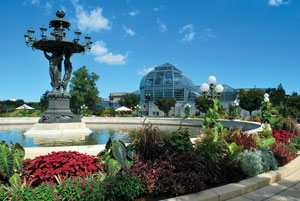
United States Botanic Garden
One of the oldest botanic gardens in the country, this giant “national greenhouse” on the Mall was initially conceived in 1816, and opened to the public in 1850. Set on three acres, the gardens consist of three parts: a conservatory containing around more than 4,000 plants, the National Garden outside, and Bartholdi Park across the street. Built in 1933, the Conservatory features almost 30,000 square feet of space and includes an orchid court, a desert garden, a children’s garden with activities, and an oversize jungle area in the center with a viewing balcony from which to observe the tropical plants and vines.
The National Garden includes a rose garden and an amphitheater made from the marble steps of the Capitol’s old east portico, a butterfly garden, and a water garden dedicated to the First Ladies of the United States, while Bartholdi Park has a spectacular, recently restored fountain as its centerpiece.
100 Maryland Ave., SW; 202-225-8333; usbg.gov. Metro Station: Capitol South/Federal Center. Free.
National Aquarium
Although significantly smaller than its cousin in Baltimore, the DC National Aquarium still contains more than 250 species of fish, amphibians, and reptiles in its site underneath the Department of Commerce building. The aquarium’s current star is a rare albino alligator, who’s in residence through April 29. Exhibits include the America’s Freshwater Ecosystems Gallery, which includes Texas cichlids, invasive snake heads from the Potomac River, and bonytail chubs from Colorado; and the Amazon River Basin Gallery, which features piranha, angelfish, emerald tree boa, freshwater stingrays, and an electric eel.
14th St. and Constitution Ave., NW; 202-482-2825; nationalaquarium.org. Metro Station: Federal Triangle. $8.
United States National Arboretum
Visitors can bike, walk, or drive through the National Arboretum’s 446 acres to see dogwood and magnolia collections, a bonsai and penjing museum, and a grove of state trees. As at the Botanic Garden, remnants of the Capitol’s old east portico can be found here; marble columns stand among a reflecting pool near the center of the grounds. The arboretum is especially well known for its magnificent collection of azaleas, which typically bloom between April and May. The collection was threatened by a lack of funding in 2010 but was saved by an anonymous donation of $1 million. The Perennial Collection includes flowering peonies, daylilies, daffodils, and more; the National Herb Garden is home to holly, juniper, pansies, and more than 100 varieties of roses.
3501 New York Ave., NE; 202-245-2726; usna.usda.gov. Not Metro accessible. Free.
Marian Koshland Science Museum
Often overlooked in a rush toward Washington’s flashier museums, this private institution run by the National Academy of Sciences looks at scientific issues that affect daily life, from climate change to disease control. Named after the groundbreaking immunologist, the Koshland museum has displays on dark matter, the ozone layer, and space telescopes. Exhibitions include a Lights at Night feature, which allows visitors to view images of the earth as seen at night from space; an Infectious Disease Gallery; and a Wonders of Science Gallery that explores noteworthy innovations.
Sixth and E Sts., NW; 202-334-1201; koshland-science-museum.org. Metro Station: Gallery Place-Chinatown/Judiciary Square. $9.95.
The National Museum of American History
Where else in the world can you find Dorothy Gale’s ruby slippers, John Bull’s train, the original Star-Spangled Banner, and Kermit the Frog in one place? This monument to all things American reopened in 2008 after $85 million of renovations. The museum’s three floors hold regularly rotating special exhibitions and artifacts on display.
The first floor focuses on transportation, technology, science, and innovation. Inside the 26,000-square-foot exhibition “America on the Move,” 340 objects showcase the evolution of transportation in America, from the first car ever driven across the country, a 1903 Winton, to an interactive model of a Chicago commuter train.
On the second floor, don’t miss the Star-Spangled Banner gallery, which displays the flag sewn by Mary Young Pickersgill in a climate-controlled chamber. Also on the second floor are Thomas Edison’s 1879 light bulb and the original Greensboro lunch counter from the 1960 sit-ins. On the west side of the third floor, “American Stories” (opening April 15) includes the aforementioned ruby slippers and Kermit.
14th St. and Constitution Ave., NW; 202-633-1000; americanhistory.si.edu. Metro Station: Federal Triangle. Free.
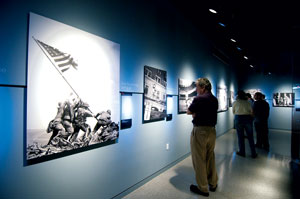
Newseum
This seven-level, $450 million complex opened in its current location by the National Mall in 2008, after five years in a smaller space in Rosslyn, Virginia. The exterior of the building is emblazoned with words from the First Amendment: “Congress shall make no law respecting an establishment of religion, or prohibiting the free exercise thereof; or abridging the freedom of speech or of the press.”
Fifteen main exhibition galleries cover major events such as the fall of the Berlin Wall and the attacks on September 11, 2001, while the News Corporation News History Gallery compiles newspapers, archival footage, and other documents from more than 500 years of reporting.
Outside the Newseum, glass cases are updated first thing with front pages from 80 different newspapers, including one from each state and other international publications. Don’t miss the Pulitzer Prize Photo Gallery, which displays some staggering shots of prize-winning photojournalism; or the NBC News Interactive Newsroom, which allows guests to read the news themselves from a TelePrompter. A 3,000-square-foot terrace on the sixth floor offers outstanding views of the Mall, the Capitol Building, and the monuments.
555 Pennsylvania Ave., NW; 888-639-7386; newseum.org. Metro Station: Archives-Navy Memorial. $21.95 (for a two-day pass).
National Archives
The government’s vast store of papers, photos, audio, video clips, and other historical records includes three crown jewels of the collection: the original Declaration of Independence, Constitution, and Bill of Rights. Open since 1935, the building informally known as Archives 1 has the Charters of Freedom on display in the rotunda, where you can also view one of the original copies of the 1297 Magna Carta, as well as two large-scale murals by Barry Faulkner. In the Public Vaults permanent exhibit gallery, you’ll find telegrams composed by Abraham Lincoln and more.
Constitution Ave. between Seventh and Ninth Sts., NW; 202-357-5000; archives.gov. Metro Station: Archives-Navy Memorial. Free.
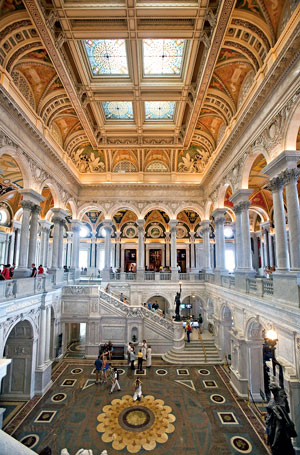
Library of Congress
Right next to the Capitol sits the largest library in the world,
housing books, photographs, maps, and other items on more than 500 miles
of bookshelves. The Library of Congress dates back to 1800, when
President Adams signed a bill inaugurating Washington as the official
seat of government and granting $5,000 to establish a library in the
Capitol. After the building was burned down by British troops in 1814
and the books destroyed, Thomas Jefferson offered his own collection of
tomes as a replacement.
The library itself now takes up three
buildings in DC and the Packard Campus in Culpeper, Virginia, and has
more than 151 million items in its collection, including 66.5 million
books, 34.5 million manuscripts, and an extensive collection of music,
photographs, and film.
The Jefferson Building has plenty to offer
visitors, including free, docent-led one-hour walking tours five times a
day. Inside, murals, statues, and mosaics adorn the walls and the
ceiling of the dome—you can take a peek into the main reading room from a
balcony on the third floor. On the second floor, “Thomas Jefferson’s
Library” displays the 6,487 books on which the current library was
founded. You can also see the Gutenberg Bible and 15 other early bibles
in interactive form on the first floor in the Great Hall East. And if
you want to access any of the library’s books, you can sign up for a
research card if you have a photo ID.
Jefferson Building, 10 First St., SE; Madison Building, 101 Independence Ave., SE; 202-707-5000; loc.gov. Metro Station: Capitol South. Free.
United States Holocaust Memorial Museum
This heart-rending museum explores the history of the Holocaust, from the beginning of the Nazi party through liberation, as well as the continuing occurrences of genocide in the modern world. Opened in 1993 by President Clinton, the museum was designed by Holocaust survivor and architect James Ingo Freed, incorporating different architectural traditions into a stark, evocative whole. The Hall of Remembrance serves as a tribute to the 11 million victims and survivors of the Holocaust; the permanent exhibition deals with the rise of Nazism, Kristallnacht, concentration camps, war crimes trials, and more.
The museum’s collection of artifacts includes a train car used to transport Jews, oral histories from survivors, diaries, toys, and photographs, as well as a deeply moving display of thousands of pairs of shoes. The museum is not recommended for children under the age of 11 due to its serious themes and subject matter.
100 Raoul Wallenberg Pl., SW; 202-488-0400; ushmm.org. Metro Station: Smithsonian. Free.
Smithsonian Castle
Informally known as the Castle thanks to its Norman-style turrets and Gothic Revival facade, the Smithsonian Institution Building is sandwiched between the Hirshhorn, the shuttered Arts and Industries Building, and the Freer Gallery on the Mall. The Castle makes a good base from which to start any sightseeing trips; its adjacent S. Dillon Ripley Center hosts exhibitions in the International Gallery and performances in the Discovery Theater. Don’t miss Smithson’s Crypt by the north entrance to the Castle, the final resting place of Smithsonian founder James Smithson.
1000 Jefferson Dr., SW; 202-633-1000; si.edu. Metro Station: Smithsonian. Free.
National Museum of the American Indian
This dramatic limestone museum focuses on the diverse cultures of Native Americans. It was founded by George Gustav Heye in 1916 and folded into the Smithsonian in 1989, opening in its current location on the Mall in 2004. The museum’s smooth, flowing exterior is designed to help it blend into the environment around it, which includes more than 40 grandfather rocks, 25 native shrub species, 27,000 herbaceous plants, and a water feature. Inside, its five floors of exhibitions represent 1,200 years of history and 1,200 indigenous cultures through historic artifacts, clothing, bowls, weapons, artwork, tools, and more.
Fourth St. and Independence Ave., SW; 202-633-1000; nmai.si.edu. Metro Station: L’Enfant Plaza/Federal Center. Free.
National Building Museum
“Architecture, Engineering, and Design” is the tagline of this Penn Quarter museum, which explores buildings and the art of creating them. Housed in the former Pension Bureau building, the museum is worth a trip for its architecture alone, with dramatic 75-foot-high interior columns in the Great Hall (some of the largest in the world). Features include an extremely popular children’s section in the Building Zone, where kids age two to six can do hands-on construction projects.
401 F St., NW; 202-272-2448; nbm.org. Metro Station: Judiciary Square. $8.
National Postal Museum
Open to the public since 1993, this Smithsonian museum lives in the Old Post Office building next to Union Station, and features interactive displays and exhibitions about the mail. Inside the majestic 1914 Beaux Arts structure, rotating stamp collections, wartime letters, and other items detail the history of the mail service since before the American revolution. Don’t miss the Philatelic Gallery, which has examples of some of the most interesting and noteworthy stamps in the world.
2 Massachusetts Ave., NE; 202-633-1000; postalmuseum.si.edu. Metro Station: Union Station. Free.
International Spy Museum
This Penn Quarter museum was founded by Milton Maltz, a codebreaker during the Korean War, to offer the public some insight into the spy trade. Discover the tricks of the world’s most famous spies, including a coat with a buttonhole camera and a KGB shoe with a heel transmitter. In “Operation Spy,” an hourlong interactive experience, visitors become US spies searching for a missing device that triggers a nuclear bomb.
800 F St., NW; 202-393-7798; spymuseum.org. Metro Station: Gallery Place-Chinatown/Metro Center. $19.95.
Crime Museum
During tourist season, you might see a life-size version of McGruff the Crime Dog trawling the streets outside this museum, which indulges our seemingly never-ending appetite for tales of grisly crimes. Attractions include Ted Bundy’s VW Beetle, a working lie detector test, a history gallery that examines American crime from pirates and the Wild West to mobsters and serial killers, and a punishment chamber displaying an electric chair, a gas chamber, and a model of a jail cell.
575 Seventh St., NW; 202-393-1099; crimemuseum.org. Metro Station: Gallery Place-Chinatown/Archives-Navy Memorial. $21.95.
Arlington National Cemetery
Some 400,000 people are buried in the 624 acres of America’s most famous cemetery, including President John F. Kennedy and Jacqueline Kennedy Onassis; Pierre L’Enfant, the architect of Washington; boxer Joe Louis; author Dashiell Hammett; and former chief justice William Rehnquist.
877-907-8585; arlingtoncemetery.mil. Metro Station: Arlington Cemetery. Free.
Folger Shakespeare Library
This independent research library boasts the world’s largest collection of Shakespeare’s printed works, and hosts exhibitions on the writer’s life and times, including one of his first folios, accompanied by a touchscreen display. Open since 1932, the building features a Tudor-style interior and an Elizabethan theater.
201 E. Capitol St., SE; 202-544-4600; folger.edu. Metro Station: Capitol South. Free.
Washington National Cathedral
The nation’s second-largest cathedral has hosted the funerals of countless presidents and Washington VIPs. There are multiple services daily, but the cathedral also hosts concerts, organ recitals, lectures, and tours of its magnificent Gothic architectural elements, including stained-glass windows, carvings and metalwork, and a grotesque of Darth Vader on the northwest tower. Special reservation-only Tour & Tea offerings include a tea in the Pilgrim Observation Gallery, which offers spectacular views of the city.
Massachusetts and Wisconsin Aves., NW; 202-537-6200; nationalcathedral.org. Not Metro accessible. $10 suggested donation.

